#royal ballet of cambodia
Explore tagged Tumblr posts
Text


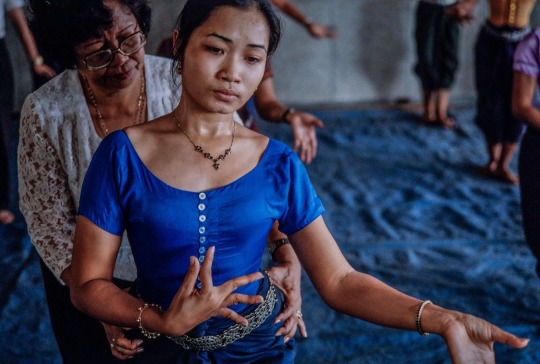



Ballet students at the Royal University of Fine Arts, Phnom Penh, Cambodia, 1999.
Photographed by Derek Hudson.
#derek hudson#royal ballet of cambodia#hands#1999#1990s#phnom pehn#cambodia#aspara dance#cambodian dance#cambodian dancer#cambodian#southeast asia#danseuse#danzatrice#fave pics
251 notes
·
View notes
Text
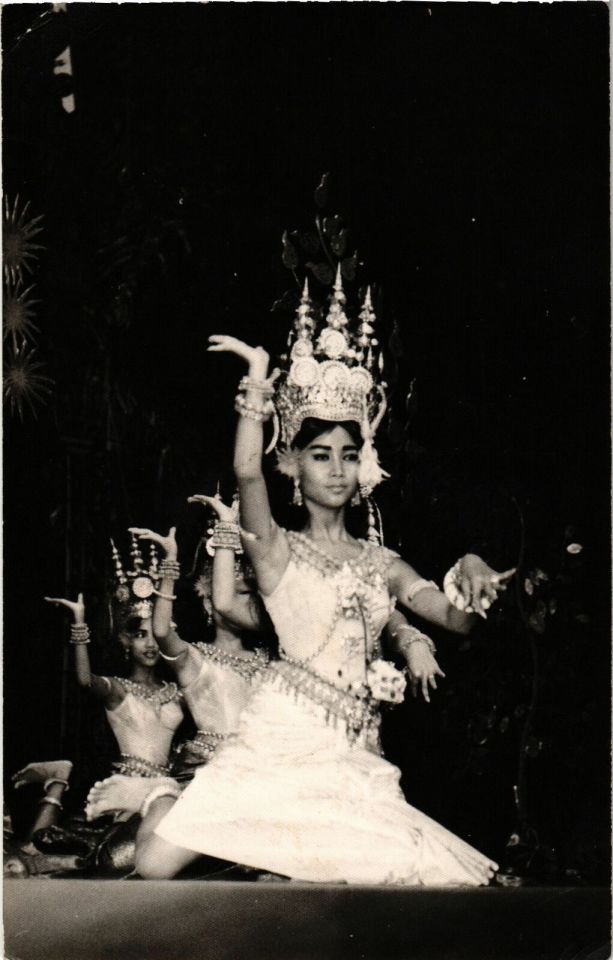
Dancers of the Royal Ballet in Cambodia
French vintage postcard
#tarjeta#cambodia#postkarte#royal#postkaart#vintage#ballet#french#dancers#sepia#photo#the royal ballet#postcard#postal#historic#briefkaart#carte postale#ephemera#ansichtskarte#photography
366 notes
·
View notes
Text
The Perfect Motion - a Moving and Magical Movie
Check out my personal review of the Perfect Motion and do something!
What is the last documentary you saw? Was it on TV or in cinema? How did it touch you? I bet you can’t answer all these questions at one take! Yet, if you go and watch “The Perfect Motion” (TPM) right now in a nearby cinema (in Cambodia), you’ll feel different about the documentary. And, after watching the whole movie, I learned why TPM is worth your time, money and spirit. Read this post along…
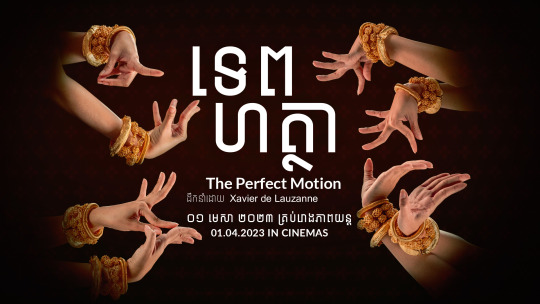
View On WordPress
0 notes
Text


Cambodian Princess Norodom Buppha Devi in the 1960s. She was also a dancer, director of the Royal Ballet of Cambodia, senator, and Minister of Culture and Fine Arts.
407 notes
·
View notes
Text
Day 16 - Phnom Penh
Well, I just realised I haven’t really said anything about the other 17 people on our tour group who are neither Kitherine, nor me, nor Paul and Sharon nor those loveable Carlyles. All Aussies our age and older - a couple of sisters from Shepparton straight out of the Granny mould (and the same age) and are great fun. The rest are made up of other married couples with the exception of the odd one out to make the odd number of 23. This oddity is Jeff and I have used the word odd because he seems to live down the rabbit hole of conspiracy theories and conversations with him invariably take a strange turn away from where you thought the conversation was heading into something from cloud cuckoo land. Most of the other people seem to have been brought up on the theory the word ‘exercise’ is actually two four letter words and hence is the be avoided. Five of these are chain smokers so the bus rides invariably have an aural soundtrack of hacking coughs as well as the chorus of ‘How far do we have to walk?!! I’m not f#%king doing that!’. They do a lot of whinging over relatively minor physical activity - but you can’t chose who you tour with - other than the six of us.
We are, of course, only one of many tour groups here, so we see many other groups staying at the same hotels. There are many German groups here, British as well and some French. The Germans seem to be determined to conform to a stereotype as they are mostly all very fat and take over the hotel. This hotel has a roof pool, and when we have been up there to check it out it was full of Germans straining the sun lounges to their absolute limit. And you should see them at breakfast! Since the Carlyles and Paul and Sharon (particularly!) like a good sleep in, we are invariably first of our group to breakfast. Below is a copy of the report from the frontline I sent to our mates warning them of the conditions in the breakfast room
“Just to give you an update on life at the front (of the breakfast buffet). The Germans attacked early and surrounded the egg and coffee strategic positions and sent continual reinforcements. Crucially, they left the pancakes unprotected and I was able to perform a raid and emerge relatively unscathed. The British attacked the hot food tureens and seemed intent on using the ‘scorched earth’ technique - they left nothing. Cereals were seen as important heritage artefacts and were left untouched, but surrounded by the coffee attackers so no one could get to them. Fruit was ransacked by all - except for the dragonfruit for some reason… and then, despite the intensity of the onslaught, a strategic withdrawal (presumably to the pool deck) occurred and a temporary ceasefire has been declared”.
Well, now I have got that off my chest, onto today’s events. This was an organised tour day, so it was onto the bus and first stop was the royal palace. Just to fill you in, Cambodia has always had a royal family, but the genocidal Pol Pot regime from 1975 to 1979 meant the royal family was in exile, and did not return until 1991, when Cambodia became a constitutional monarchy. The current king was in exile in France where he was a ballet dancer - and, no, I am not making this up. He is now 70 years old and lives in the royal palace with his 90 year old mother and has never married and has no direct heirs. His successor will have to be found from the royal relatives - the king can either nominate a successor or the relatives can hold a ballot amongst themselves to chose a successor. Perhaps I am reading between the lines a bit, but I rather think that an ex-ballet dancer ‘confirmed bachelor’ who still lives at home with his mum might be partial to a few show tunes, don’t you think?
Anyway, I mention all this because his digs were the first stop on our tour today. From there, we went to the Central Markets and then, in a slightly disturbing choice, to the city genocide museum. There is no escaping the evil murderous hand of Pol Pot in this country - and this is how they address it. The museum is in a former torture and execution camp in the middle of Phnom Penh that was formerly a school. Apparently the Khmer Rouge set up 167 of these camps all over the country. It is genuinely horrifying and distressing to view so no description will be forthcoming - the only takeaway is that you can never underestimate how low the evil human beings in a mob rule situation can stoop to. This was Cambodians killing fellow Cambodians for no valid reason at all.
Well, the brighten the mood a bit, the Carlyles and us took a Tuk Tuk down to the river to go on a Mekong sunset river cruise - and it was tremendous. A very well spent $5USD. Then it was a nighttime Tuk Tuk ride back to our hotel, dinner around the pool on the 10th floor and some blog writing. And that brings us up to date. Last full day tomorrow before we fly home.
2 notes
·
View notes
Text
Royal Ballet celebrates 20th anniversary on UNESCO list
via Phnom Penh Post, 07 November 2023: It has been 20 years since Khmer Classical Dance has been inscribed into the UNESCO Intangible Cultural Heritage list.
via Phnom Penh Post, 07 November 2023: It has been 20 years since Khmer Classical Dance has been inscribed into the UNESCO Intangible Cultural Heritage list. Renowned for its elegant hand movements and exquisite attire, the Royal Ballet of Cambodia, also referred to as Khmer Classical Dance, shares a profound connection with the Khmer court that spans more than a millennium. Marking two decades…

View On WordPress
0 notes
Text
柬埔寨的生活和故事
2023年3月,因为工作的关系来到柬埔寨,也不是我必须来,而是我想体验下不同国家的生活。那个有在不同国家生活的梦想一直环绕。一路上大家都在问, 啊?你去柬埔寨?KK園?(對了,KK園不在柬埔寨)會不會是詐騙? 简单挑了了个便宜又有煮饭地方的民宿就上路了。 一開始只準備待兩個月,一再延期,不想離開。柬埔寨,我對他沒有期待確給我很多驚喜和親切。
不記得那裏看過一句話,柬埔寨是一個會讓你深深愛上又被深深傷害的國家。在這裡的愛與痛總有交織。在柬埔寨工資不高,但只需要在港一半或者更少的工資,已經可以在這裡有不錯的生活。出入打tuktuk車,在港吃茶餐廳的錢就可以在高級餐廳吃。而在金邊生活的一大節目就是去吃各國美食,而且是有世界級水準的。外國人多數生活在一個bubble裡面,那裏有錢就有美好。超市的東西很貴,沒有什麼本地人出入。後來明白,街市的東西便宜又新鮮,幹嘛要去超市交智商稅。我也生活在這些泡泡裡面,過著很舒適的生活。很難想像,柬埔寨是我遊歷過的國家中最窮的,走在首都的路上很跳躍,這裡彷彿在一個縣城,突然會有一個很現代的mall或者是一個彷彿白宮的私人住宅。有錢能買到的享受,不比在香港差太多。在柬埔寨有不少第一次:第一次去Spa/facial (真的,哈哈),Bodia 不錯的體驗。如果你剛好在金邊也可以去下,他的產品也不錯呢。第一次打日本太鼓,看起來很容易,但也是幾分鐘一首歌就能打出汗呢。第一次戶外攀岩,在kampot臨時起意,不錯的經驗。第一次在教會做中英同聲傳譯,很難也挺好玩的。突然被熟人委託。
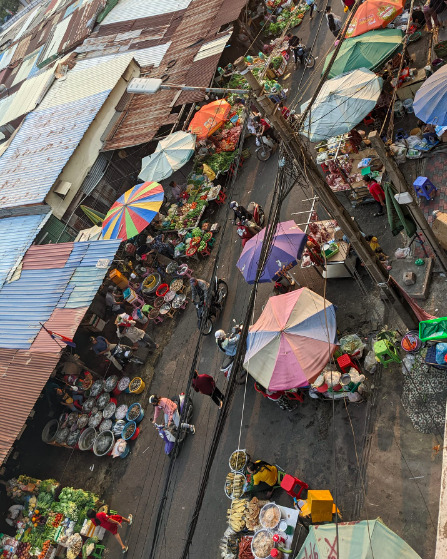
金邊俄��斯市場
因為只是做半職的緣故,有時間可以出去玩,也趁機到處走走看看。柬埔寨出了吳哥窟以外還有很多可以看的東西。比如西哈努克旁邊的海島、洞里薩湖的水上人家、貢布爬山玩河吃海鮮,殖民地時期的法式建築等等。

克隆撒冷島的海灘
柬埔寨辦公室氣氛很好,在辦公室午餐帶返和大家一起分享總有很多迷人的小聚,可以和不同部門的人一起吃飯,吃大家的住家飯,有新奇的事物他們都會大聲問我,xx你吃過沒有?然後讓我試吃。除了食物,大家也分享故事。一次偶然和機構一群資深同事在pantry坐在一起,分享食物,聊他們的童年。R說童年在鄉下,河裏捕魚很容易抓到。我說那你的童年一定很開心,有很多東西玩。S接到,我們的童年很苦,但好像對於我們來說都是很平常的事情。R點頭,說起自己小時候得過的病,登革熱、肺病、寄生蟲等等,說自己小時候某次全身已經變紫色,爸爸因為是老師有一個自行車,可以帶著媽媽和他去100公里外看病。騎到一半很生氣,一來路很難騎,二來這個小孩也不知道救不救得活,生氣的說,(娃娃)不如扔掉算了。我問,那後來呢?R說,我媽不讓。大家大笑。他接著說,小時候因為媽媽要幹活,媽媽就把他放在一個大水缸裡,放上水,讓他玩水,也可以困住他不亂跑。但因為泡的時間太久,他又太小,處於半溺水的狀態導致肺部感染,在長大以後經過很多治療才好。S說她小時候有很多特別的治療方法,比如在肚子上用��藥燙幾個點,比如把手掌某個部份切開拉出長長的寄生蟲,比如人屎煲的椰水,具體如何操作沒有細究。S說的時候,旁邊的同事也在補充細節,在那些年這是他們父母知道的最好方法了吧。而他們也頑強的活到今天。S也繼續說自己小時候,打仗是生活的一部分,沒有覺得害怕。只是睡醒了和姐弟互相嘲笑鼻子下因為黑煙造成的粗線。砲火太近,他們也吸了不少廢氣。S說,小時候一打砲彈,爸爸一個本來應該保護家人的男子就會非常無助,甚至失禁。媽媽要擔心他們兄妹幾個,還有爸爸。爸爸的創傷是紅色高棉時期留下的。那時候爸爸和爸爸的弟弟在某個大坑里躲砲彈,爆炸結束後,爸爸就再也搖不醒身邊的弟弟。至今每次回家鄉看到家人,時常會因為這些記憶困擾發作,對於其他旁觀的家人也是很痛苦的。分享中的柬埔寨同事,每個人的記憶都彷彿發生在昨天。柬埔寨不只經歷可怕的紅色高棉時期(1976-79)還有直持續到90年代的戰爭。柬埔寨人對和平非常珍惜。
在柬埔寨的很多文化/藝術,都是帶有這個時期的歷史色彩,講述如何從這個痛苦中重生。講述第二代如何再去尋找上一代人的經歷以及再去理解、和解。赤柬把柬埔寨文化發展夷為平地,這個國家點人民,也在用自己的力量一點點重新構建,找回自己,創造自己。
如果有興趣推薦你去聽聽這兩個關於柬埔寨人經歷的故事:
The Moth:故事一是Cambodia living art的創辦人講述自己如何在赤柬時期生存,離開柬埔寨後又回到柬埔寨和叫自己殺人的將軍重逢、和解的故事。有幸見過這個這個人,參加國這個機構25週年的活動。
還有電影,關於柬埔寨舞蹈重生的故事:
0 notes
Text
HISTERICAL PHOTO -The Royal Ballet of Cambodia or Khmer Classical Dance of Angkor
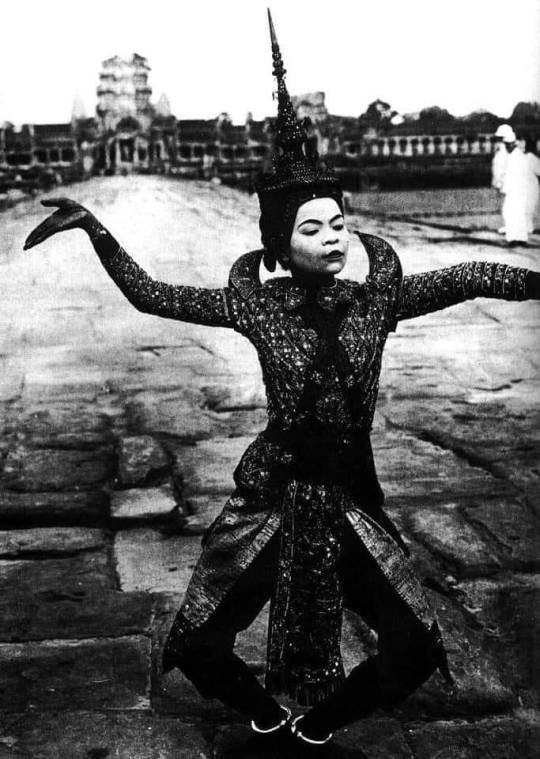
0 notes
Text
Khmer Times: HRH Princess Norodom Buppha Devi
Khmer Times: HRH Princess Norodom Buppha Devi

This Cover is amazing. I love it.
Thank you to my beloved Brother HRH Prince Sisowath Ravivaddhana Monipong for sharing this with me.
View On WordPress
#apsara#Cambodia#Cambodian Heritage#Cambodian Royal Family#Cambodian Traditional Dance#dance#His Highness Sisowath Ravivaddhana Monipong#HRH Princess Norodom Buppha Devi#inspiration#Khmer#khmer culture#light#Royal Ballet of Cambodia
2 notes
·
View notes
Link
Princess Norodom Buppha Devi, the oldest daughter of late King Father Norodom Sihanouk, passed away on Monday in a Bangkok hospital. She was 76. Prince Tesso Sisowath, King Norodom Sihamoni’s cousin, today confirmed Princess Buppha Devi passed away at 12:30 pm on Monday in a Bangkok hospital where she had received medical treatment for about two weeks.“I am really shocked and I cried when I received the information that she died. I love her so much. She is a good person to me and to all Cambodian people,” Prince Tesso said. Prince Tesso said Princess Buppha Devi spent her whole life dedicated to performance arts.“I do not know when her body will be sent to Cambodia but it could be as soon as possible,” he said. Princess Devi was born on January 8, 1943 in Phnom Penh. She was the director of the Royal Ballet of Cambodia.She was the elder sister of Prince Norodom Ranariddh. She was a half-sister of King Sihamoni and bestowed with the title of Her Royal Highness Samdech Reach Botrei Preah Ream Norodom Buppha Devi.
#royal ballet of cambodia#RIP#Obituary#Princess Buppha Devi#Cambodia#Khmer#Khmer Art#Robam#Classical Dance#Traditional Dance#Ballet
2 notes
·
View notes
Photo


Colourization and digital restoration I did of a Khmer dancer.
I can’t find any info on the original b+w. I found the file on Pinterest on a board for Khmer Royal Ballet Dance costumes.
Here is the pin: https://www.pinterest.ca/pin/694680311263522180/
#khmer#cambodia#cambodian#history#dance#khmer royal ballet#sampot#sbai#dancer#khmer dance#colorization#colorized
1 note
·
View note
Photo

Royal Ballet of Cambodia
#fashion#dance costumes#southeast asia#cambodia#cambodian fashion#southeast asian fashion#crowns#headdress#jewelry
533 notes
·
View notes
Text
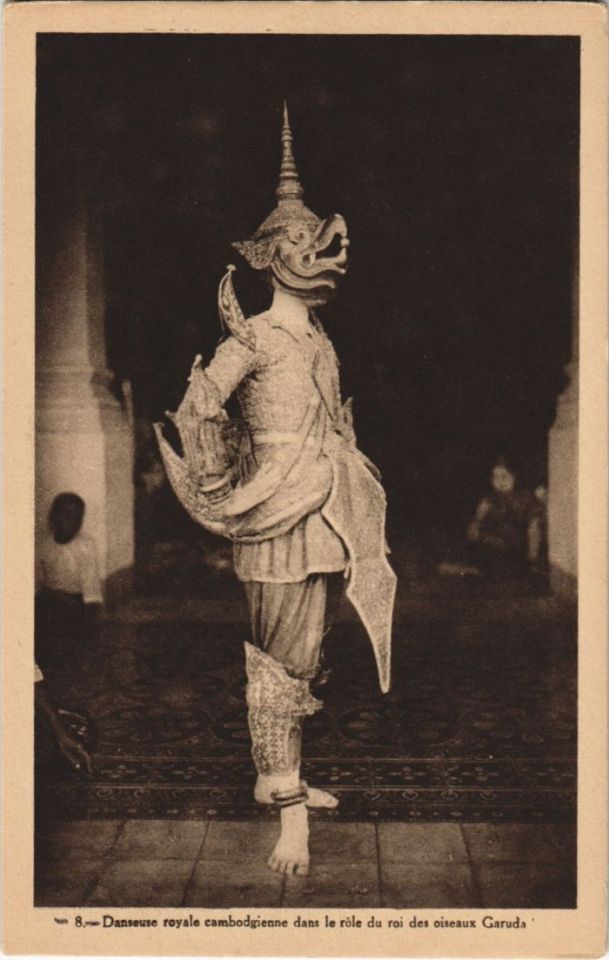
Dancer of the royal ballet in Cambodia
French vintage postcard
#dancer#photo#ansichtskarte#cambodia#postal#postkaart#sepia#french#ballet#tarjeta#ephemera#photography#carte postale#historic#briefkaart#royal#postcard#vintage#postkarte
15 notes
·
View notes
Text
WORLD’S LITERATURE
SOUTHEAST ASIA
Southeast Asia or Southeastern Asia is the southeastern subregion of Asia, consisting of the regions that are geographically south of China, east of the Indian subcontinent and north-west of Australia. Southeast Asia is bordered to the north by East Asia, to the west by South Asia and the Bay of Bengal, to the east by Oceania and the Pacific Ocean, and to the south by Australia and the Indian Ocean. Apart from the British Indian Ocean Territory and two out of 26 atolls of Maldives in South Asia, Southeast Asia is the only other subregion of Asia that lies partly within the Southern Hemisphere. Southeast Asia covers about 4.5 million km2 (1.7 million mi2), which is 10.5% of Asia or 3% of Earth's total land area. Its total population is more than 655 million, about 8.5% of the world's population. It is the third most populous geographical region in Asia after South Asia and East Asia. The region is culturally and ethnically diverse, with hundreds of languages spoken by different ethnic groups. Ten countries in the region are members of the Association of Southeast Asian Nations (ASEAN), a regional organization established for economic, political, military, educational and cultural integration amongst its members.
youtube
The region, together with part of South Asia, was well known by Europeans as the East Indies or simply the Indies until the 20th century. Chinese sources referred the region as Nanyang ("南洋"), which literally means the "Southern Ocean". The mainland section of Southeast Asia was referred to as Indochina by European geographers due to its location between China and the Indian subcontinent and its having cultural influences from both neighboring regions. In the 20th century, however, the term became more restricted to territories of the former French Indochina (Cambodia, Laos, and Vietnam). The maritime section of Southeast Asia is also known as the Malay Archipelago, a term derived from the European concept of a Malay race. Another term for Maritime Southeast Asia is Insulindia (Indian Islands), used to describe the region between Indochina and Australasia. The term "Southeast Asia" was first used in 1839 by American pastor Howard Malcolm in his book Travels in South-Eastern Asia. Malcolm only included the Mainland section and excluded the Maritime section in his definition of Southeast Asia.[13] The term was officially used in the midst of World War II by the Allies, through the formation of South East Asia Command (SEAC) in 1943.[14] SEAC popularised the use of the term "Southeast Asia," although what constituted Southeast Asia was not fixed; for example, SEAC excluded the Philippines and a large part of Indonesia while including Ceylon. However, by the late 1970s, a roughly standard usage of the term "Southeast Asia" and the territories it encompasses had emerged.
Ethnic groups of Southeast Asia
The Aslians and Negritos were believed as one of the earliest inhabitant in the region. They are genetically related to the Papuans in Eastern Indonesia, East Timor and Australian Aborigines. In modern times, the Javanese are the largest ethnic group in Southeast Asia, with more than 100 million people, mostly concentrated in Java, Indonesia. The second largest ethnic group in Southeast Asia is Vietnamese (Kinh people) with around 86 million population, mainly inhabiting in Vietnam, thus forming a significant minority in neighboring Cambodia and Laos. The Thais is also a significant ethnic group with around 59 million population forming the majority in Thailand. In Burma, the Burmese account for more than two-thirds of the ethnic stock in this country, with the Indo-Aryan Rohingya make up a significant minority in Rakhine State. Indonesia is clearly dominated by the Javanese and Sundanese ethnic groups, with hundreds of ethnic minorities inhabited the archipelago, including Madurese, Minangkabau, Bugis, Balinese, Dayak, Batak and Malays. While Malaysia is split between more than half Malays and one-quarter Chinese, and also Indian minority in the West Malaysia however Dayaks make up the majority in Sarawak and Kadazan-dusun makes up the majority in Sabah which are in the East Malaysia. The Malays are the majority in West Malaysia and Brunei, while they forming a significant minority in Indonesia, Southern Thailand, East Malaysia and Singapore. In city-state Singapore, Chinese are the majority, yet the city is a multicultural melting pot with Malays, Indians and Eurasian also called the island their home.The Chams form a significant minority in Central and South Vietnam, also in Central Cambodia. While the Khmers are the majority in Cambodia, and form a significant minority in Southern Vietnam and Thailand, the Hmong people are the minority in Vietnam, China and Laos.Within the Philippines, the Tagalog, Visayan (mainly Cebuanos, Warays and Hiligaynons), Ilocano, Bicolano, Moro (mainly Tausug, Maranao, and Maguindanao) and Central Luzon (mainly Kapampangan and Pangasinan) groups are significant.
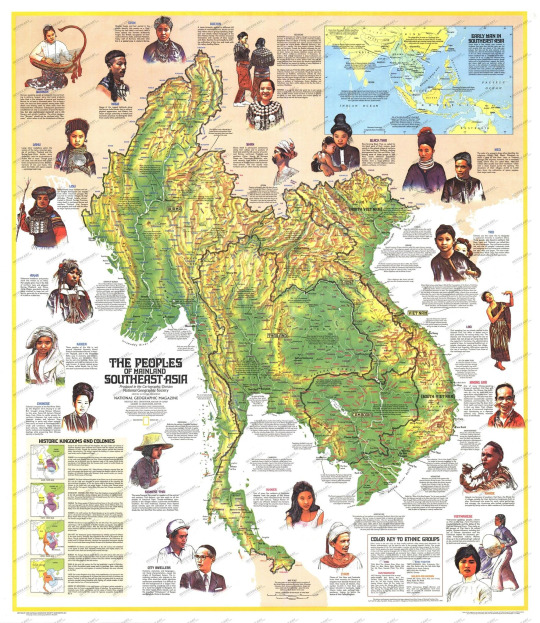
Culture of Southeast Asia
The culture in Southeast Asia is very diverse: on mainland Southeast Asia, the culture is a mix of Burmese, Cambodian, Laotian and Thai (Indian) and Vietnamese (Chinese) cultures. While in Indonesia, the Philippines, Singapore and Malaysia the culture is a mix of indigenous Austronesian, Indian, Islamic, Western, and Chinese cultures. Also Brunei shows a strong influence from Arabia. Vietnam and Singapore show more Chinese influence[140] in that Singapore, although being geographically a Southeast Asian nation, is home to a large Chinese majority and Vietnam was in China's sphere of influence for much of its history. Indian influence in Singapore is only evident through the Tamil migrants,[141] which influenced, to some extent, the cuisine of Singapore. Throughout Vietnam's history, it has had no direct influence from India – only through contact with the Thai, Khmer and Cham peoples. Moreover, Vietnam is also categorized under the East Asian cultural sphere along with China, Korea, and Japan due to the large amount of Chinese influence embedded in their culture and lifestyle.
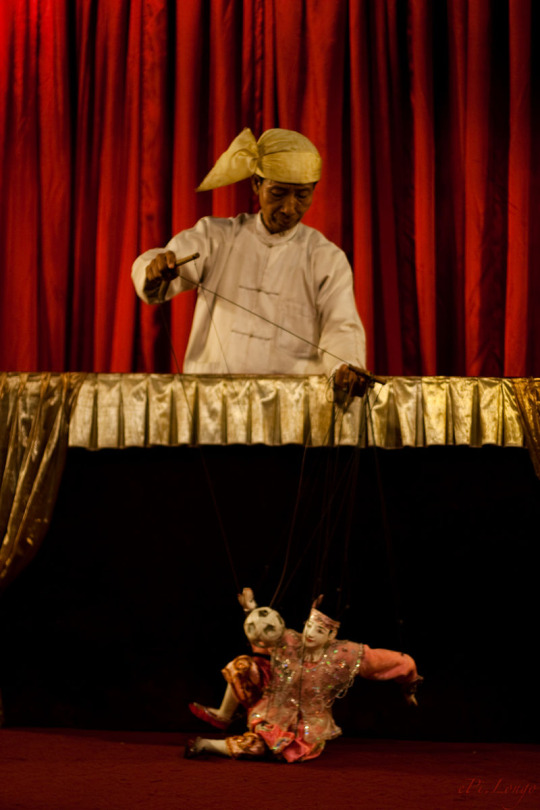
ARTS in Southeast Asia
The arts of Southeast Asia have affinity with the arts of other areas. Dance in much of Southeast Asia includes movement of the hands as well as the feet, to express the dance's emotion and meaning of the story that the ballerina is going to tell the audience. Most of Southeast Asia introduced dance into their court; in particular, Cambodian royal ballet represented them in the early 7th century before the Khmer Empire, which was highly influenced by Indian Hinduism. Apsara Dance, famous for strong hand and feet movement, is a great example of Hindu symbolic dance.
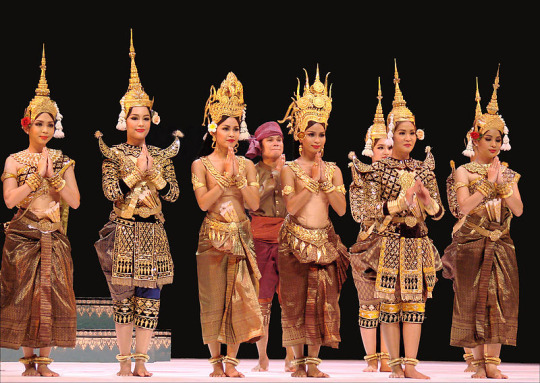
MUSIC in Southeast Asia
Traditional music in Southeast Asia is as varied as its many ethnic and cultural divisions. Main styles of traditional music can be seen: Court music, folk music, music styles of smaller ethnic groups, and music influenced by genres outside the geographic region. Of the court and folk genres, Gong chime ensembles and orchestras make up the majority (the exception being lowland areas of Vietnam). Gamelan and Angklung orchestras from Indonesia, Piphat /Pinpeat ensembles of Thailand and Cambodia and the Kulintang ensembles of the southern Philippines, Borneo, Sulawesi and Timor are the three main distinct styles of musical genres that have influenced other traditional musical styles in the region. String instruments also are popular in the region. On 18 November 2010, UNESCO officially recognized angklung as a Masterpiece of Oral and Intangible Heritage of Humanity, and encourage Indonesian people and government to safeguard, transmit, promote performances and to encourage the craftsmanship of angklung making.

WRITING in Southeast Asia
The history of Southeast Asia has led to a wealth of different authors, from both within and without writing about the region. Originally, Indians were the ones who taught the native inhabitants about writing. This is shown through Brahmic forms of writing present in the region such as the Balinese script shown on split palm leaf called lontar. The antiquity of this form of writing extends before the invention of paper around the year 100 in China. Note each palm leaf section was only several lines, written longitudinally across the leaf, and bound by twine to the other sections. The outer portion was decorated. The alphabets of Southeast Asia tended to be abugidas, until the arrival of the Europeans, who used words that also ended in consonants, not just vowels. Other forms of official documents, which did not use paper, included Javanese copperplate scrolls. This material would have been more durable than paper in the tropical climate of Southeast Asia. In Malaysia, Brunei, and Singapore, the Malay language is now generally written in the Latin script. The same phenomenon is present in Indonesian, although different spelling standards are utilised (e.g. 'Teksi' in Malay and 'Taksi' in Indonesian for the word 'Taxi'). The use of Chinese characters, in the past and present, is only evident in Vietnam and more recently, Singapore and Malaysia. The adoption of Chinese characters in Vietnam dates back to around 111 B.C., when it was occupied by the Chinese. A Vietnamese script called Chữ Nôm used modified Chinese characters to express the Vietnamese language. Both classical Chinese and Chữ Nôm were used up until the early 20th century. However, the use of the Chinese script has been in decline, especially in Singapore and Malaysia as the younger generations are in favour of the Latin Script.
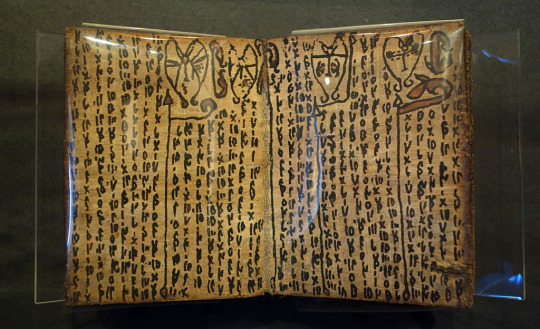
EAST ASIA
East Asia is the eastern region of Asia, which is defined in both geographical and ethno-cultural terms.The modern states of East Asia include China, Hong Kong, Japan, Macau, Mongolia, North Korea, South Korea, and Taiwan. The East Asian states of China, North Korea, South Korea and Taiwan are all unrecognized by at least one other East Asian state due to severe ongoing political tensions in the region, specifically the division of Korea and the political status of Taiwan. Hong Kong and Macau, two small coastal quasi-dependent territories located in the south of China, are officially highly autonomous but are under de jure Chinese sovereignty. North Asia borders East Asia's north, Southeast Asia the south, South Asia the southwest and Central Asia the west. To the east is the Pacific Ocean and to the southeast is Micronesia (a Pacific Ocean island group, classified as part of Oceania). Countries such as Singapore and Vietnam are also considered a part of the East Asian cultural sphere due to its cultural, religious, and ethnic similarities.
youtube
East Asia was one of the cradles of world civilisation, with China developing its first civilizations at about the same time as Egypt, Babylonia and India. China stood out as a leading civilization for thousands of years, building great cities and developing various technologies which were to be unmatched in the West until centuries later. The Han and Tang dynasties in particular are regarded as the golden ages of Chinese civilization, during which China was not only strong militarily, but also saw the arts and sciences flourish in Chinese society. It was also during these periods that China exported much of its culture to its neighbors, and till this day, one can notice Chinese influences in the traditional cultures of Vietnam, Korea and Japan. Korea and Japan had historically been under the Chinese cultural sphere of influence, adopting the Chinese script, and incorporating Chinese religion and philosophy into their traditional culture. Nevertheless, both cultures retain many distinctive elements which make them unique in their own right.
EAST ASIAN ARTS
East Asian arts, the visual arts, performing arts, and music of China, Korea (North Korea and South Korea), and Japan. (The literature of this region is treated in separate articles on Chinese literature, Korean literature, and Japanese literature.) Some studies of East Asia also include the cultures of the Indochinese peninsula and adjoining islands, as well as Mongolia to the north. The logic of this occasional inclusion is based on a strict geographic definition as well as a recognition of common bonds forged through the acceptance of Buddhism by many of these cultures. China, Korea, and Japan, however, have been uniquely linked for several millennia by a common written language and by broad cultural and political connections that have ranged in spirit from the uncritically adorational to the contentious.
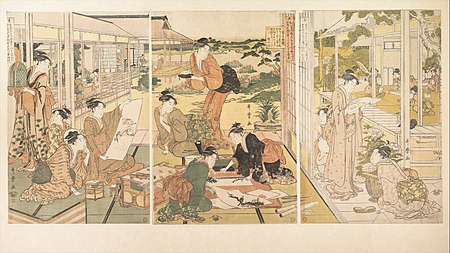
SOUTH AND WEST ASIA
A region marked by social and cultural diversity, South and West Asia is also identified by its economic potential and growth. The region is valued for its supply of low cost goods, services and skilled labour to the global economy but at the same time, it is notorious for the payment of low wages, appalling working conditions and trafficking of labour. This changing economic landscape has had a corresponding impact on the social and geographic fabric of the region. Rural families are moving to cities and urbanization is creating mega cities with an increasing number of slums, poor sanitation and massive pollutions. Large infrastructure and development projects have led to increased forced evictions and displacement. India and Nepal are two of the highest ranking countries for child malnutrition in the world. In the Maldives, migrants represent almost one quarter of the population, creating major social challenges.
youtube
Significantly, all nine members of the South Asian Association for Regional Cooperation have civilian democratic systems of governance, however in some, key institutions remain fragile, democratic cultures remain weak and the military retains a powerful role. The status of ratification of international human rights instruments shows a good commitment among South Asian countries to the universally recognized human rights norms and standards. This is however nuanced by the introduction of reservations and interpretative declarations and delays in reporting to treaty bodies. The absence of adequate and effective national protection systems to ensure accountability is a common issue across South Asian States where torture, ill-treatment, corruption and impunity remain major concerns. Although six countries in the region have established national institutions, only half of them maintain “A” status and there is no regional human rights mechanism. In addition, manifestations of socially and politically entrenched discrimination on the basis of ethnicity, religion, gender, caste and sexual preference have rendered certain groups vulnerable and disempowered. Women are assuming new economic and social roles but continue to face deeply rooted discrimination and violence.
ANGLO-AMERICA AND EUROPE
Anglo-America (also referred to as Anglo-Saxon America) most often refers to a region in the Americas in which English is a main language and British culture and the British Empire have had significant historical, ethnic, linguistic and cultural impact. Anglo-America is distinct from Latin America, a region of the Americas where Romance languages (Spanish, Portuguese and French) are prevalent.
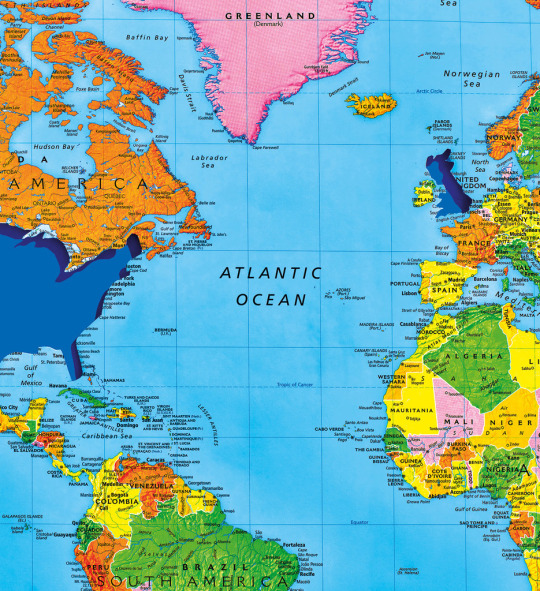
The Division of Rare and Manuscript Collections has considerable holdings in Anglo-American literature from the 17th century onward, with notable strengths in the 18th century, Romanticism, and the Victorian and modern periods. Among the seventeenth-century holdings is a complete set of the Shakespeare folios, and works by John Milton and his contemporaries. Eighteenth-century highlights include near comprehensive printed collections of Jonathan Swift and Alexander Pope, and substantial holdings on John Dryden, Samuel Johnson, Joseph Addison, Sir Richard Steele, William Cowper, Fanny Burney, and others. Related materials include complete runs of periodicals, such as the Spectator and the Tatler. The Division’s book holdings are also especially rich in the literature of the 19th and early 20th centuries. The Cornell Wordsworth Collection, the second largest Wordsworth collection in the world, documents the Romantic movement in detail. All the major “standard” authors of the Victorian and modern periods, such as Charles Dickens, George Eliot, T.S. Eliot, W.B. Yeats, Joseph Conrad, James Joyce, Virginia Woolf, et al., are well represented. In addition, the library’s holdings in Victorian fiction include scarce works by many popular women authors of the time, such as Elizabeth Gaskell, Maria Edgeworth, Marie Corelli, Ouida, and Helen Mathers. The collection also includes many popular literary genres such as gift annuals, dime novels, railroad novels, and yellowbacks, as well as the small literary magazine of the 1920s and 1930s. The modern collection features strong collections of manuscripts and books by George Bernard Shaw, Rudyard Kipling, Ford Madox Ford, Wyndham Lewis, and James Joyce. In support of RMC’s Human Sexuality Collection, the rare book collections feature especially strong representations of literary works by gay, lesbian, bisexual, and transgender writers, such as Oscar Wilde, Christopher Isherwood, Vita Sackville-West, Radclyffe Hall, E.M. Forster, W.H. Auden, Ronald Firbank, Edith Sitwell, Elizabeth Bowen, Jan Morris, and others. The collection’s strengths in more recent British literature include the works of Sylvia Plath, Ted Hughes, Philip Larkin, and Doris Lessing, to name just a few.
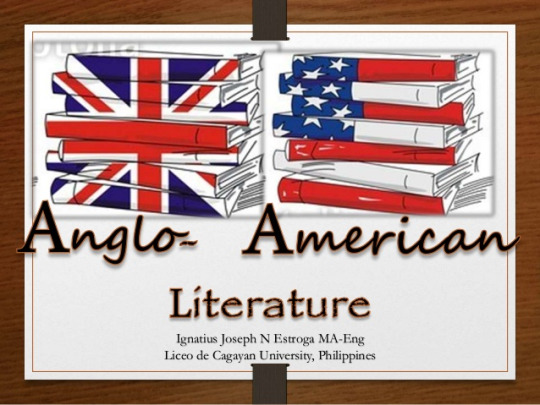
AFRICA
Africa is the world's second-largest and second-most populous continent, after Asia in both cases. At about 30.3 million km2 (11.7 million square miles) including adjacent islands, it covers 6% of Earth's total surface area and 20% of its land area. With 1.3 billion people as of 2018, it accounts for about 16% of the world's human population. Africa's population is the youngest amongst all the continents; the median age in 2012 was 19.7, when the worldwide median age was 30.4. Despite a wide range of natural resources, Africa is the least wealthy continent per capita, in part due to geographic impediments, legacies of European colonization in Africa and the Cold War,undemocratic rule and deleterious policies. Despite this low concentration of wealth, recent economic expansion and the large and young population make Africa an important economic market in the broader global context.
youtube
Early human civilizations, such as Ancient Egypt and Phoenicia emerged in North Africa. Following a subsequent long and complex history of civilizations, migration and trade, Africa hosts a large diversity of ethnicities, cultures and languages. The last 400 years have witnessed an increasing European influence on the continent. Starting in the 16th century, this was driven by trade, including the Trans-Atlantic slave trade, which created large African diaspora populations in the Americas. In the late 19th century, European countries colonized almost all of Africa, extracting resources from the continent and exploiting local communities; most present states in Africa emerged from a process of decolonisation in the 20th century.
African literature, the body of traditional oral and written literatures in Afro-Asiatic and African languages together with works written by Africans in European languages. Traditional written literature, which is limited to a smaller geographic area than is oral literature, is most characteristic of those sub-Saharan cultures that have participated in the cultures of the Mediterranean. In particular, there are written literatures in both Hausa and Arabic, created by the scholars of what is now northern Nigeria, and the Somali people have produced a traditional written literature. There are also works written in Geʿez (Ethiopic) and Amharic, two of the languages of Ethiopia, which is the one part of Africa where Christianity has been practiced long enough to be considered traditional. Works written in European languages date primarily from the 20th century onward. The literature of South Africa in English and Afrikaans is also covered in a separate article, South African literature.
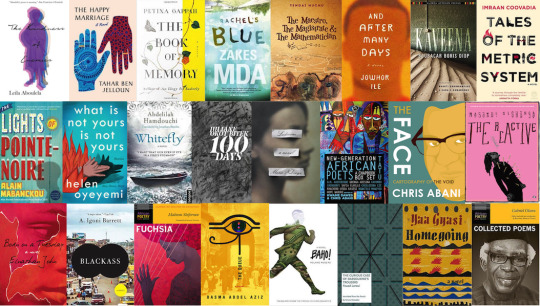
LATIN AMERICA
Latin America is a group of countries and dependencies in the Western Hemisphere where Romance languages such as Spanish, Portuguese, and French are predominantly spoken. Some subnational regions such as Quebec and parts of the United States where Romance languages are primarily spoken are not included due to the countries as a whole being a part of Anglo America (an exception to this is Puerto Rico, which is almost always included within the definition of Latin America despite being a territory of the United States). The term is broader than categories such as Hispanic America which specifically refers to Spanish-speaking countries or Ibero-America which specifically refers to both Spanish and Portuguese-speaking countries. The term is also more recent in origin.
youtube
The term "Latin America" was first used in an 1856 conference with the title "Initiative of America. Idea for a Federal Congress of the Republics" (Iniciativa de la América. Idea de un Congreso Federal de las Repúblicas), by the Chilean politician Francisco Bilbao. The term was further popularised by French emperor Napoleon III's government in the 1860s as Amérique latine to justify France's military involvement in Mexico and try to include French-speaking territories in the Americas such as French Canada, French Louisiana, or French Guiana, in the larger group of countries where Spanish and Portuguese languages prevailed.

Origins
There is no universal agreement on the origin of the term Latin America. Some historians[citation needed] believe that the term was created by geographers in the 16th century to refer to the parts of the New World colonized by Spain and Portugal, whose Romance languages derive from Latin. Others argue that the term arose in 1860s France during the reign of Napoleon III, as part of the attempt to create a French empire in the Americas.[11] The idea that a part of the Americas has a linguistic affinity with the Romance cultures as a whole can be traced back to the 1830s, in the writing of the French Saint-Simonian Michel Chevalier, who postulated that this part of the Americas was inhabited by people of a "Latin race", and that it could, therefore, ally itself with "Latin Europe", ultimately overlapping the Latin Church, in a struggle with "Teutonic Europe", "Anglo-Saxon America" and "Slavic Europe"
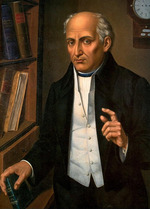
In 1804, Haiti became the first Latin American nation to gain independence, following a violent slave revolt led by Toussaint L'ouverture on the French colony of Saint-Domingue. The victors abolished slavery. Haitian independence inspired independence movements in Spanish America. y the end of the eighteenth century, Spanish and Portuguese power waned on the global scene as other European powers took their place, notably Britain and France. Resentment grew among the majority of the population in Latin America over the restrictions imposed by the Spanish government, as well as the dominance of native Spaniards (Iberian-born Peninsulares) in the major social and political institutions. Napoleon's invasion of Spain in 1808 marked a turning point, compelling Criollo elites to form juntas that advocated independence. Also, the newly independent Haiti, the second oldest nation in the New World after the United States, further fueled the independence movement by inspiring the leaders of the movement, such as Miguel Hidalgo y Costilla of Mexico, Simón Bolívar of Venezuela and José de San Martín of Argentina, and by providing them with considerable munitions and troops.Fighting soon broke out between juntas and the Spanish colonial authorities, with initial victories for the advocates of independence. Eventually, these early movements were crushed by the royalist troops by 1810, including those of Miguel Hidalgo y Costilla in Mexico in the year 1810. Later on Francisco de Miranda in Venezuela by 1812. Under the leadership of a new generation of leaders, such as Simón Bolívar "The Liberator", José de San Martín of Argentina, and other Libertadores in South America, the independence movement regained strength, and by 1825, all Spanish America, except for Puerto Rico and Cuba, had gained independence from Spain. In the same year in Mexico, a military officer, Agustín de Iturbide, led a coalition of conservatives and liberals who created a constitutional monarchy, with Iturbide as emperor. This First Mexican Empire was short-lived, and was followed by the creation of a republic in 1823.
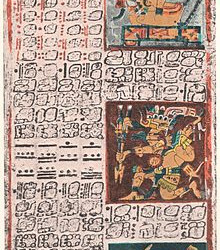
Latin American literature consists of the oral and written literature of Latin America in several languages, particularly in Spanish, Portuguese, and the indigenous languages of the Americas as well as literature of the United States written in the Spanish language. It rose to particular prominence globally during the second half of the 20th century, largely due to the international success of the style known as magical realism. As such, the region's literature is often associated solely with this style, with the 20th Century literary movement known as Latin American Boom, and with its most famous exponent, Gabriel García Márquez. Latin American literature has a rich and complex tradition of literary production that dates back many centuries.
by; MICHELL ANN C. CATALAN
15 notes
·
View notes
Text
Top 10 Folk Dances
Anybody can dance. That’s why dance has a global appeal. People may dance for fun, for relieving stress or to shed some pounds! A folk dance reminds the people of the ancient cultures of their lands. In any country, a folk dance is connected with the local emotions and is highly praised throughout the world. Although there are a many folk dances, this article mentions the top ten globally popular folk dances.
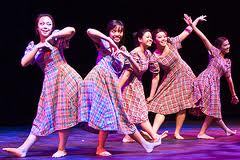
1. Samba (Brazil)- One of the toughest folk dances for many, the Brazilians don’t usually put in a lot of effort in this dance. It is a must on celebrations and carnivals. Samba has a lot of variations in music and leg movements but the basic steps remain the same.
2. Tarantella (Italy)- In 16th century, people in the Taranto region of Italy started dancing hysterically to ward off death from the poisonous spider, tarantula. It also serves therapeutic purposes.
3. Flamenco (Spain)- It originated in Andalusia in southern Spain and involves finger-snapping, clapping and singing with female dancers in a red billowy dress.
4. Dragon Dance (China)- This dance is popular in and outside mainland China. The dragon represents China and is practised on festivals.
5. Kabuki (Japan)- It began in the 17th century in the streets of Kyoto by female performers who played both male and female parts. Kabuki is the art of drama, singing and dancing.
6. Tango (Argentina)- Before becoming a famous ballroom dance, this sensuous and erotic dance form was performed only in bars by middle-class people.
7. Hula (Hawaii)- This dance form was created by the Polynesians of the country. It is performed by either sitting or standing or both. It is also accompanied by ukulele.
8. Bharatnatyam (India)- Performed only by women, this solo dance form originated in the temples of Tamil Nadu in South India. Bharatnatyam is the illustrative anecdote of Hindu religious themes.It is the oldest classical dance forms of India and is regarded as the mother of other Indian classical dance forms. Dancers are accompanied by a singer, music and a guru who directs the performance. This dance form has also inspired other art forms like painting and sculptures since the 6th century.
9. Apsara (Cambodia)- In Hindu and Buddhist mythologies, apsara is a female spirit. The dance was created by the Royal Ballet of Cambodia under the patronage of the Queen in the 20th century. Sine the dance form gets its name from a mythological creature, that’s why the dancers have heavily ornamented costumes for the aesthetic appeal. Just as an apsara who hypnotizes the onlooker, the dancers of this dance look equally intriguing.
10. Irish Step Dance (Ireland)- Evolved from the traditional Irish dance, the Irish Step Dance is the most popular folk dance in Ireland. Shoes have a major part in the dance form. Irish Step Dance can be performed by wearing either hard or soft shoes, in groups or solo. It is unique, involves the intricate foot-work and is performed during festivals and carnivals.
See more dance costumes here.
3 notes
·
View notes
Photo
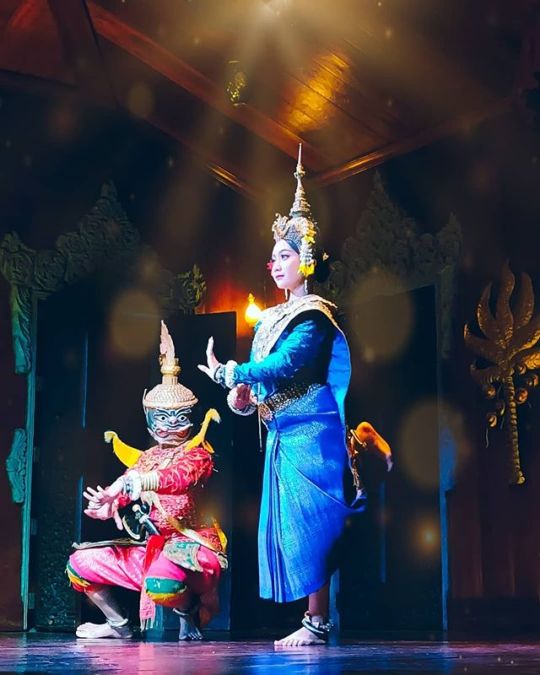
Capturing the essence of the Apsara Dance. 🤩💗 Did you know that the Apsara Dance or "Royal Ballet of Cambodia" is listed as World Heritage Property by UNESCO since 7th November 2003? 📝🎊 - ស្វែងយល់នូវអត្ថន័យរបាំអប្សរា 🤩💗 តើអ្នកដឹងទេថារបាំអប្សរា ឬរបាំព្រះរាជទ្រព្យកម្ពុជាត្រូវបានដាក់បញ្ចូលក្នុងបញ្ជីបេតិកភណ្ឌពិភពលោក ដោយអង្គការយូណេស្កូចាប់តាំងពីថ្ងៃទី 7 ខែវិច្ឆិកាឆ្នាំ 2003 មកដែររឺទេ? 📝🎊 - 📸 #siemreapmoments by @sak.1992 👉 @bestofcambodia to explore the best destinations in Cambodia. . . . . . #insidesiemreap #siemreap #cambodia #insidecambodia #instatravel #instakhmer #visitcambodia #southeastasia #cambodianpride #hanuman #apsara #apsaratheater #danceperformance #dancing #culturetrip #cultures #khmer #cambodian #siemreapnet #danceshow #seekmoments #traditional #localculture #bucketlistitem #traveleverywhere #southeastasia #visitasia #bestofcambodia #siemreapmoments
2 notes
·
View notes